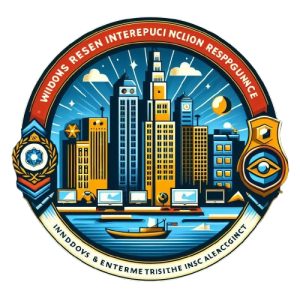


The Advanced Software Exploitation (ASE) course offers security professionals an opportunity to test and develop their skills like never before. During this course, students will learn to identify common vulnerabilities and then use them to develop exploits for a wide range of software applications, including popular Windows applications, interpreted languages, and Web browsers.
In the first half of the course, attendees will use fuzzing, reverse engineering, and source code auditing, to attack a wide variety of applications (e.g. iTunes, Firefox, Vulnserver, etc.) and then use proven exploitation techniques to develop an exploit for one of the VMs (Windows 7, Windows 8.1 and Windows 10).
Then, in the second half of the course, the focus will shift from classic vulnerabilities to more advanced ones. In this section, students will learn how to escape Java sandbox using a type confusion vulnerability, how to circumvent the ASLR without pointer leaks, and how to use precise heap spraying, just to name a few.
By the end of this course, students will know how to find software vulnerabilities using fuzzing, reverse engineering, and source code auditing, and then how to write their own exploits in Python, JavaScript, or Java.
Fundamentals: Intro
Fundamentals: Stack Buffer Overflow
Fundamentals: Structured Exception Handler Overwrite
File Format Fuzzing: Intro
File Format Fuzzing: The Peach Fuzzer
Network Protocol Fuzzing: Vulnerability Discovery
Network Protocol Fuzzing: Exploitation
Attacking Web Browsers: Vulnerability Discovery
Attacking Web Browsers: Exploitation
Practical Patch Diffing
Exploiting vulnerabilities in the Oracle JVM: Vulnerability Discovery
Exploiting vulnerabilities in the Oracle JVM: Exploitation
Advanced Windows exploitation
Conclusion

This intensive three-day course is designed to teach the fundamental investigative techniques needed to respond to today’s cyber threats. The fast-paced course is built upon a series of hands-on labs that highlight the phases of a targeted attack, sources of evidence and principles of analysis. Examples of skills taught include how to conduct rapid triage on a system to determine whether it is compromised, uncover evidence of initial attack vectors, recognize persistence mechanisms and investigate an incident throughout an enterprise. Although the course is focused on analyzing Windows-based systems and servers, the techniques and investigative processes are applicable to all systems and applications. The course includes detailed discussions of common forms of endpoint, network and file-based forensic evidence collection and their limitations as well as how attackers move around in a compromised Windows environment. The course also explores information management that enriches the investigative process and bolsters an enterprise security program. Discussion topics include the containment and remediation of a security incident, and the connection of short-term actions to longer-term strategies that improve organizational resiliency.

Sophisticated attackers frequently go undetected in a victim’s network for an extended period. Attackers can blend their traffic with legitimate traffic that only skilled network analysts know how to detect. This course shows learners how to identify malicious network activity. The course provides an overview of network protocols, network architecture, intrusion detection systems, network traffic capture and traffic analysis. Learners review the types of network monitoring and the tools commonly used to analyze captured network traffic. The course also explores the best techniques for investigating botnets and how to use honeypots in network monitoring. The course includes lectures and hands-on lab sessions to reinforce technical concepts.

Learn everything about the latest methods of phishing, using reverse proxying to bypass Multi-Factor Authentication. Learn to think like an attacker, during your red team engagements, and become the master of phishing with Evilginx.
Introduction
Setup
Getting Started
Advanced Phishing
Security Hardening
Remote Deployment
Deep Sea Phishing

The training is divided in five sections: Initial foothold, Gaining access, Offensive Coding, internal reconnaissance and lateral movement. The training will cover each section in depth by providing technical evidence of how each technique works. Red team exercises are performed to assess responsiveness and detection capability. As a red teamer, it is important to understand what each tool and commands we use is doing behind the curtain to be able to provide proper guidance. The training will help you understand the tool and technique being used during a red team, develop your own toolset, adapt existing tools when needed, provide guidance on where to look for new techniques or potential evasion tricks and finally an overview of the popular technique used to perform red team exercise.
Expect to perform code review, network analysis, code behavior analysis and write code to improve your red team capabilities.
Initial foothold
Payload Crafting
Gaining access
Internal reconnaissance
Lateral Movement